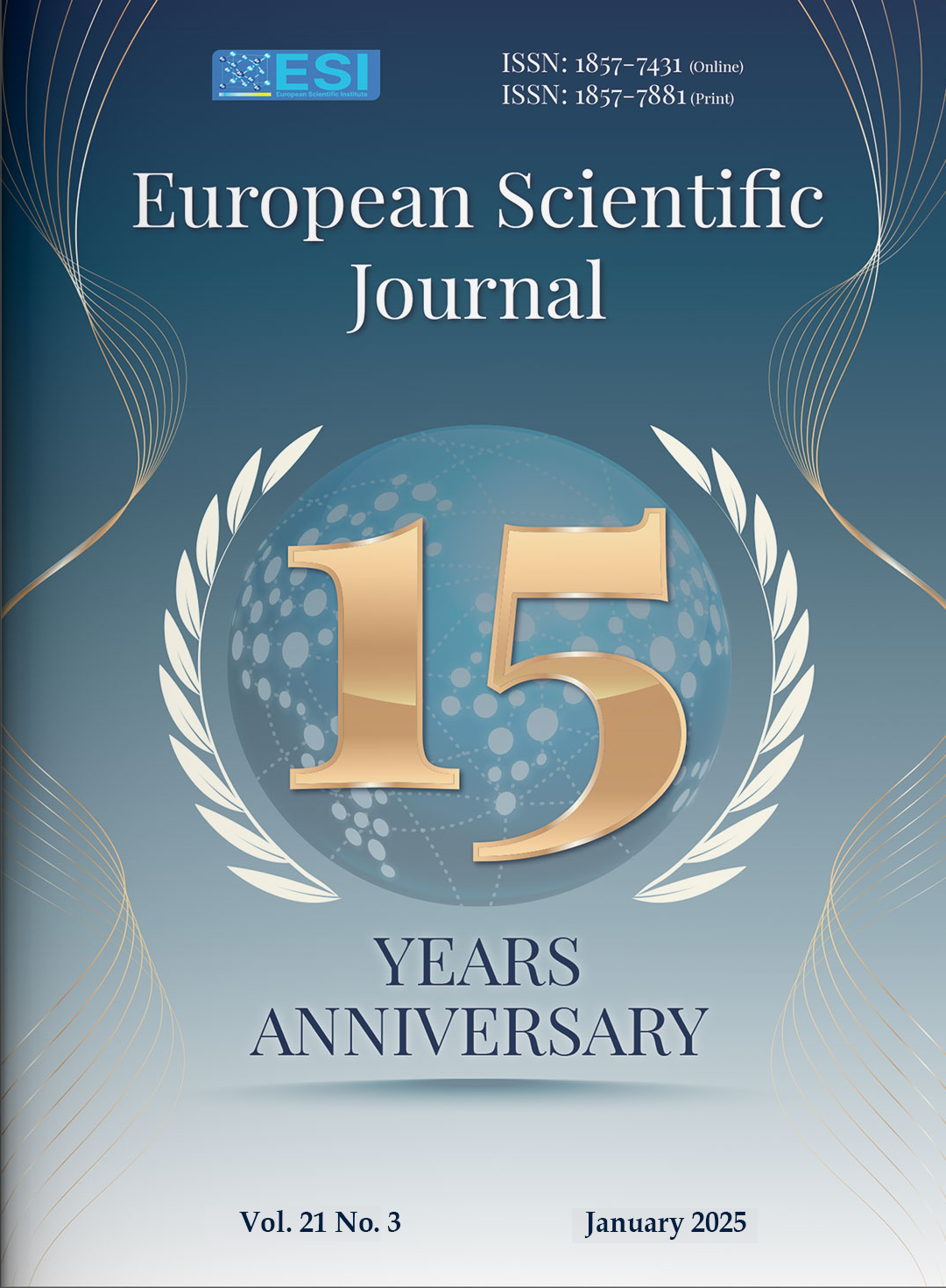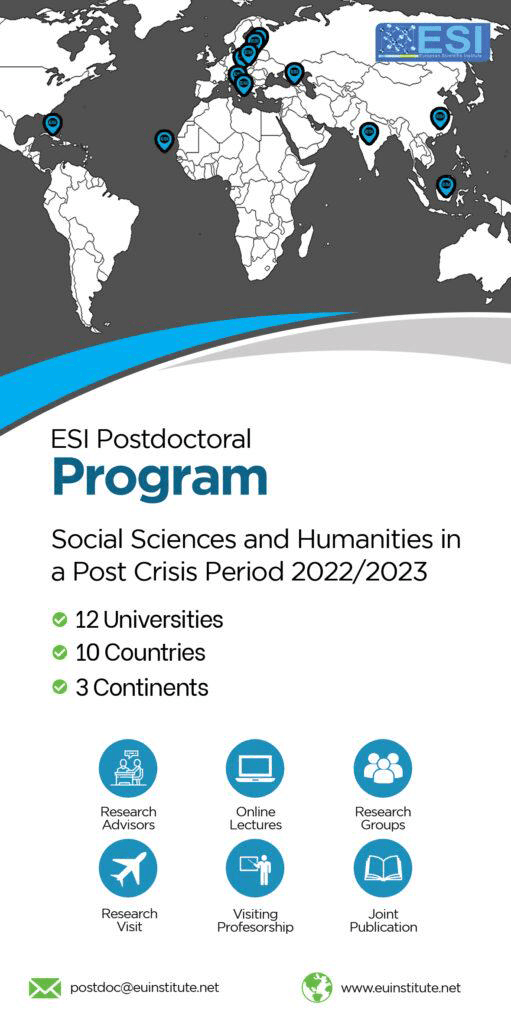Phénotypage d’un Germoplasme de Variétés Locales et Exotiques de Patate Douce [Ipomoea batatas (L.) Lam] sur la Base des Caractères Quantitatifs: Implications pour l’Amélioration Génétique au Togo
Abstract
La patate douce est une plante à racines tubérisées qui contribue à la sécurité alimentaire au Togo. Cependant, peu de données scientifiques existent sur la variabilité génétique au sein des cultivars du Togo, alors que ces informations sont un prérequis pour une mise en œuvre efficace des stratégies de conservation et de développement de nouvelles variétés. L’objectif de cette étude était d’explorer la diversité phénotypique au sein des cultivars de patate douce du Togo. Le phénotypage a porté sur soixante-cinq (65) variétés du Togo et seize (16) variétés exotiques de l’Unité d’Amélioration Génétique du Burkina Faso. Le dispositif expérimental adopté est un « lattice carré 9 x 9 ». Au total, seize (16) caractères quantitatifs ont été évalués conformément à l’ontologie de la patate douce établie par le Centre International de la Pomme de Terre (CIP). Les statistiques descriptives, l’Analyse de Variance (ANOVA) et l’Analyse en Composantes Principales (ACP) ont mis en évidence une forte variabilité au sein du germoplasme pour les caractères tels que le rendement en racines tubéreuses, leur teneur en matière sèche, la biomasse aérienne, la longueur de la tige, la longueur des entre-nœuds et le diamètre des tiges. La classification ascendante hiérarchique (CAH) réalisée sur la base de la distance euclidienne avec comme critère d’agrégation la méthode de Ward a révélé quatre (4) groupes hétérotiques. Les groupes I et II sont composés de variétés à faibles rendements en racines tubéreuses (12,95 et 15,87 t.ha-1) et à teneur élevée en matière sèche (29,68 et 26,86 %). Les groupes III et IV sont constitués de variétés à hauts rendements en biomasse (37,74 et 50,75 t.ha-1), en racines tubéreuses (16,06 et 20,18 t.ha-1) et à teneur modérée (entre 15% et 25%) en matière sèche (24,62 et 23,84 %). La forte variabilité phénotypique observée dans cette banque de gène constitue une base pour les programmes de conservation et d’amélioration génétique de la patate douce au Togo.
Sweet potato is a root crop that contributes to food security in Togo. However, little scientific data exists on the genetic variability of varieties grown in Togo, although this information is a prerequisite for the effective implementation of germplasm conservation strategies and the development of new varieties. The objective of this study was to explore the phenotypic diversity within Togo’s sweet potato varieties. The plant material is composed of sixty-five (65) varieties from Togo and sixteen (16) exotic varieties introduced from Burkina Faso Breeding Unit. The experiment was laid out using a lattice square design. In total, sixteen (16) quantitative traits were evaluated in accordance with the sweet potato ontology as described by Centre Internationale de la Pomme de Terre (CIP). Descriptive statistics, Analysis of Variance (ANOVA), and Principal Components Analysis (PCA) revealed high variability among varieties for traits such as root yield, dry matter content, aboveground biomass, stem length, internode length, and stem diameter. Cluster analysis performed on the basis of the Euclidean distance using the Ward method as aggregation criterion revealed four phenotypic clusters. Clusters I and II are composed of varieties with low root yield (12.95 and 15.87 t.ha-1) and high dry matter content (29.68 and 26.86%). Clusters III and IV are made up of varieties exhibiting high aboveground biomass (37.74 and 50.75 t.ha-1), high fresh root yield (16.06 and 20.18 t.ha-1), and moderate (comprised between 15% and 25%) dry matter content (24.62 and 23.84%). The variability observed in this gene bank constitutes a basis for conservation and genetic improvement programs of sweet potatoes in Togo.
Downloads
Metrics
PlumX Statistics
References
2. Agre, P. A., Edemodu, A., Obidiegwu, J. E., Adebola, P., Asiedu, R., & Asfaw, A. (2023). Variability and genetic merits of white Guinea yam landraces in Nigeria. Frontiers in Plant Science, 14, 1–12. https://doi.org/10.3389/fpls.2023.1051840
3. Ayisah, D., Banito, A., & Gumedzoe, D. (2015). Criblage de clones d’ignames du complexe Dioscorea cayenensis-rotundata pour la résistance au virus de la mosaïque de l’igname (YMV) au Togo. International Journal of Biological and Chemical Sciences, 8(5), 2198. https://doi.org/10.4314/ijbcs.v8i5.23
4. Christinck, A., Doka, M., Horneber, G., Ruganda, G., Pale, G., & Whitney, C. (2016). From Breeding to Nutrition: Orange-Fleshed Sweetpotatoes in Farming and Food Systems of Uganda, Kenya, and Burkina Faso. 1994–2014.
5. Da Silva, A. V. C., Andrade, L. N. T., Rabbani, A. R. C., Nunes, M. U. C., & Pinheiro, L. R. (2014). Genetic diversity of sweet potatoes collection from Northeastern Brazil. African Journal of Biotechnology, 13(10), 1109–1116. https://doi.org/10.5897/ajb2013.13339
6. David, M. C., Diaz, F. C., Mwanga, R. O. M., Tumwegamire, S., Mansilla, R. C., & Grüneberg, W. J. (2018). Gene pool subdivision of east african sweetpotato parental material. Crop Science, 58(6), 2302–2314. https://doi.org/10.2135/cropsci2017.11.0695
7. Detchinli, K. S., Sogbedji, M. J., Atchoglo, R., & Bona, K. A. (2017). Modelisation des doses economiques optimales du fumier de ferme en culture du maïs (Zea mays L.) sur les sols ferrallitiques au Togo. Revue Cames, 5(1), 52–58.
8. Djinet, A., Nana, R., Tamini, Z., & Badiel, B. (2015). Etude comparée des paramètres agromorphologiques de dix (10) variétés de patate douce (Ipomoea batatas (L.) Lam cultivées au champ dans deux (2) conditions climatiques au Tchad et au Burkina Faso. International Journal of Biological and Chemical Sciences, 9(3), 1243. https://doi.org/10.4314/ijbcs.v9i3.9
9. Doussoh, A.M., Dangou, J. S., Houedjissin, S. S., Assogba, A. K., & Ahanhanzo, C. (2016). Analyse des connaissances endogènes et des déterminants de la production de la patate douce [Ipomoea batatas (L.)], une culture à haute valeur socioculturelle et économique au Bénin. International Journal of Biological and Chemical Sciences, 10(6), 2596. https://doi.org/10.4314/ijbcs.v10i6.16
10. Doussoh, Arsène Mahoutondji, Dangou, J. S., Ahanhanzo, C., Houedjissin, S. S., & Assogba, A. K. (2018). Assessment of the Phenotypic Diversity of Sweet Potato Landraces (Ipomoea batatas L.) Cultivated in Benin Using Morphological Descriptors. International Journal of Plant & Soil Science, 24(1), 1–13. https://doi.org/10.9734/ijpss/2018/43470
11. FAO (2022). World Food and Agriculture. In The Lancet, 274 (7102). https://doi.org/10.1016/S0140-6736(59)91820-3
12. Glato, K., Aidam, A., Kane, N. A., Bassirou, D., Couderc, M., Zekraoui, L., Scarcelli, N., Barnaud, A., & Vigouroux, Y. (2017). Structure of sweet potato (Ipomoea batatas) diversity in West Africa covaries with a climatic gradient. PLoS ONE, 12(5), 1–17. https://doi.org/10.1371/journal.pone.0177697
13. Gobena, T. L., Asemie, M. M., & Firisa, T. B. (2022). Evaluation of released sweet potato [Ipomoea batatas (L.) Lam] varieties for yield and yield-related attributes in Semen-Bench district of Bench-Sheko-Zone, South-Western Ethiopia. Heliyon, 8(10), e10950. https://doi.org/10.1016/j.heliyon.2022.e10950
14. Grüneberg, W. J., Abidin, E., Ndolo, P., Pereira, C. A., & Hermann, M. (2004). Variance component estimations and allocation of resources for breeding sweetpotato under East African conditions. Plant Breeding, 123(4). https://doi.org/10.1111/j.1439-0523.2004.01000.x
15. Huamàn, Z. (1991). Descriptors for Sweet Potato. CIP-AVRDC-IBPGR, Rome, Italy, p. 51.
16. ITRA, (2007). Situation de référence sur les plantes à racines et tubercules cultivées au Togo: igname, manioc, patate douce, taro, pomme de terre. 108p.
17. Kouassi, J. H. M., Mambé, A.-D. B., Konan, E. B. D., Brice, S. E., Kouakou, A. M., Boni, N., & Wanyou, D. L., (2023). Agronomic evaluation sweet potato (Ipomoea batatas (L) Lam.) genotypes in two agro-ecological zones of Côte d’Ivoire. World Journal of Advanced Research and Reviews, 17(2), 208–218. https://doi.org/10.30574/wjarr.2023.17.2.0194
18. Karuri, H. W., Ateka, E. M., Amata, R., Nyende, A. B., Muigai, A. W. T., Mwasame, E., & Gichuki, S. T. (2010). Evaluating diversity among kenyan sweet potato genotypes using morphological and SSR markers. International Journal of Agriculture and Biology, 12(1), 33–38.
19. Koechlin, J. (1989). Les gombos africains (Abelmoschus ssp) : Etude de la diversité en vue de l’amélioration. Thèse Doctorat, Institut National Agronomique. Paris-Grignon, France. p. 180.
20. Kotchofa, R., Fanou, A., Baimey, H., Azanma, F., Zadji, L., & Sodjinou, E. (2019). Tolérance de quelques accessions de patate douce (Ipomoea batatas L.) cultivées au sud-Bénin aux charançons de la patate douce (Cylas spp.) sous infestation naturelle. Journal of Applied Biosciences, 140(1), 14293. https://doi.org/10.4314/jab.v140i1.8
21. Lebot, V. (2019). Sweet potato: agronomy. Tropical Root and Tuber Crops: Cassava, Sweet Potato, Yams and Aroids, 157–173. https://doi.org/10.1079/9781789243369.0157
22. Nanema, R. K, Traore, E. R., Bationo, P., & Zongo, J.-D. (2009). Morphoagronomical characterization of Solenostemon rotundifolius (Poir. J. K. Morton) (Lamiaceae) germplasm from Burkina Faso. Int. J. Biol. Chem. Sci, 3(5), 1100–1113. http://indexmedicus.afro.who.int
23. Ouédraogo, M. H. (2016). Etude De La Diversité Génétique Des Gombos [Abelmoschus Esculentus (L.) Moench] Cultivés Au Burkina Faso. Thèse Unique de Doctorat, Université Ouaga I Pr Joseph KI-ZERBO, Burkina Faso. p. 165.
24. Rukundo, P., Shimelis, H., Laing, M., & Gahakwa, D. (2015). Phenotypic characterisation of sweetpotato genotypes grown in East and Central Africa. South African Journal of Plant and Soil, 32(2), 77–86. https://doi.org/10.1080/02571862.2014.994141
25. Sembiring, N., Hardaningsih, W., Anidarfi, & Illahi, A. K. (2022). Identification, Characterization, and Conservation of Sweet Potato Germplasm (Ipomoea batatas L.) in West Sumatera Production Center. IOP Conference Series: Earth and Environmental Science, 1097 (1). https://doi.org/10.1088/1755-1315/1097/1/012051
26. Shumbusha, D., Shimelis, H., Laing, M., & Asiimwe, T. (2017). Phenotypic diversity analysis of sweetpotato for breeding dual-purpose varieties. Acta Agriculturae Scandinavica Section B: Soil and Plant Science, 67(4), 340–351. https://doi.org/10.1080/09064710.2017.1281431
27. Somé, K., Vernon, G., Isaac, A., Eric, Y. D., Jeremy, T. O., Tignegre, J. B., Belem, J., & Tarpaga, M. V. (2014). Diversity analysis of sweet potato (Ipomoea batatas [L.] Lam) germplasm from Burkina Faso using morphological and simple sequence repeats markers. African Journal of Biotechnology, 13(6), 729–742. https://doi.org/10.5897/ajb2013.13234
28. Tarpaga, W.V. (2001). Etude de la variabilité agromorphologique d’une collection de Solenostemon rotundifolius du Burkina Faso. Mém. D’Ing. de Dev. Rural, Univ. Bobo-Dsso, Bobo Dsso, p. 56
29. Tibiri, E. B., Somé, K., Pita, J. S., Tiendrébéogo, F., Bangratz, M., Néya, J. B., Brugidou, C., & Barro, N. (2019). Effects of sweet potato feathery mottle virus, sweet potato chlorotic stunt virus and their co-infection on sweet potato yield in Western Burkina Faso. Open Agriculture, 4(1), 758–766. https://doi.org/10.1515/opag-2019-0076
30. Veasey, E. A., Queiroz-Silva, J. R., Silva, R. M., Borges, A., De Andrade, B. E., & Peroni, N. (2007). Phenology and morphological diversity of sweet potato (Ipomoea batatas) landraces of the Vale do Ribeira. Scientia Agricola, 64(4), 416–427. https://doi.org/10.1590/s0103-90162007000400013
31. Ward, J. H. (1963). Hierarchical grouping to optimize an objective function. J. Am. Stat. Assoc., 58, 236–244.
32. Yada, B., Tukamuhabwa, P., Alajo, A., & Mwanga, R. O. M. (2010). Morphological characterization of Ugandan sweetpotato germplasm. Crop Science, 50(6), 2364–2371. https://doi.org/10.2135/cropsci2009.04.0199
Copyright (c) 2025 Tighankoumi Gmakouba, Atti Tchabi, P. Napoli, J. K. Bamaze, K. Some, R. E. Traore, M. Hamed Ouedraogo, K. Romaric Nanema

This work is licensed under a Creative Commons Attribution 4.0 International License.








